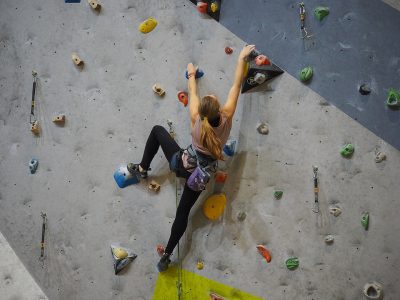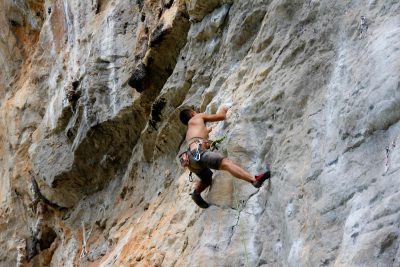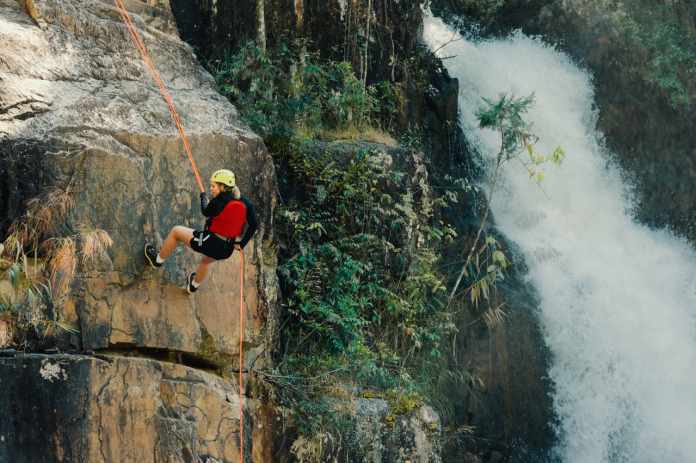If one wrong step can risk your life, you would know the importance of buying the best rock climbing shoes. It is pretty evident that a pair of climbing shoes are the interface between you and a rock. So, when you choose the perfect pair you need to consider three basic things:
- Type: you need to choose between neutral, aggressive, or moderate shoes depending on what kind of activity you do.
- Features: you need to know the features of the shoes like the lining straps, laces, rubber, and overall performance
- Fit: you need to keep a check on the fit to see how well it works. For example, rock climbing shoes must snug but not hurt you. It needs the right fit to help you climb for a long time.
Table of Contents
Choosing the best rock climbing shoes
On the basis of these three aspects, you need to figure out which pair of shoes you need for your next expedition:
Type
The foremost thing is the type of shoe you need to buy. Check out the three types you can choose from:
1. Neutral
These shoes are relaxed and give you all-day comfort. You can place your toes flat inside them and can flex well. These are the best rock climbing shoes for beginners but they must be good at rock climbing anyway.
Pros
- All-day comfort
- Medium or stiff midsoles
- Sturdy rubber soles for support
- Easy to slot into cracks
Cons
- Less sensitive due to thick soles
- Not good for difficult overhanging routes
2. Aggressive
These rock climbing shoes have downturned toes and have great heel tension. It puts your feet in a powerful position for overhanging climbs. These create the asymmetric shape and curves towards your big toe. It gives power to the area for precise placements. These shoes are best for single-pitch sport routes.
Pros
- Perfect for gym wear and tough rock climbing routes
- Stickier rubber with thin soles offers better grip
Cons
- Not comfortable enough
- Doesn’t fit well into cracks or smears like the other two types
- Wears off faster than neutral shoes
3. Moderate
You can distinguish them by the downturned shape and is good for a technical climb. They can handle slab routes, long multi-pitch climbs, and crack climbs.
Pros
- Puts feet into a strong position
- Helps climb challenging routes
- Thin soles and stickier rubber offer better grip
Cons
- best intermediate climbing shoes but not for advanced
- not good enough for overhung routes
- Wears off faster and less comfortable compared to neutral shoes

Features
The second-most important thing is the features of rock climbing shoes. These include:
1. Footwear closure
- Lace-up: it is the most versatile style and feature you can expect from a pair of rock climbing shoes. You simply need to tighten and loosen them according to your route or activity type.
- Strap: these have a hook and loop system for the convenient on and off feature. They are ideal for gym or if you need to slip them off in-between climbs.
- Slip-on: these are slippers that have elastic closures. These are fun to try while training and they are strong and fast.
2. Climbing shoe material
- Unlined leather: stretches for full size and is comfortable. Size them to ensure that your toes touch the end of your shoe.
- Lined leather: in this case, the stretch is reduced to half size. Some shoes only have a line on the toes to keep costs low and reduce stretch.
- Synthetic material: these shoes don’t stretch much and become soft with use. It doesn’t change the fit but the perforated synthetic uppers add a little more than the solid fabric. Some of it allows feet to breathe and keep sweat at bay.
3. Climbing shoe last
- Slip-lasted: these are sensitive and not stiff. They don’t usually have insole and get stiffness from midsole that locates right above the outsole.
- Board-lasted: these are stiffer than slip-lasted shoes. These sacrifice sensitivity and is more comfortable and perfect for all-day use.
4. Shape
The last determines the shape of rock climbing shoes. They are either:
- Straight: shoes that are flat or straight gives comfort and relaxation. They are perfect for long hours of crack climbing. These are usually neutral shoes instead of the other two.
- Asymmetric: the shape places its longest point across your big toe and gives power on the inside edge. These are usually either aggressive or moderate shoes.
- Downturned: these bends downwards and are built for heel and toe hooking over an overhanging route.
5. Climbing shoe outsole
- Outsole rubber: there are different kinds of rubber you’d find in rock climbing shoes. These differ in grip, type, and performance.
- Outsole thickness: this affects performance and the feel of a shoe.
- Thick soles: perfect support for edging and is durable. These are perfect for beginners and last long.
- Thinner soles: these are 3-4 mm thick and best for smearing on a slab route. Perfect for advanced leveled rock climbers.

Fit
Finally, you need to check how well the shoes fit you and for that, you need to:
1. Try what you buy
You don’t just try a pair of rock climbing shoes like your regular shoes. You need to understand how they feel and imagine yourself on a tough route. If you’re a beginner take expert help by taking a pro along with you or ask the shopkeeper to guide you.
2. Flexible
There is no perfect size to determine which pair will fit you for your next rock climbing adventure. You need to make sure that the pair you try is flexible.
3. Know the type you want
Depending on the features and types, you must know what you’re looking for. You need to first choose the types, check the features, and then finally buy it. The shoes shouldn’t end up hurting you.
Tips to buy the best rock climbing shoes
- Don’t buy shoes that have a lot of space between the toes as it won’t give you enough grip
- You need to keep your toes flat for comfort and make sure the toe knuckle doesn’t bend. It will pain a lot if this happens
- Your heels must have a snug fit
- When you stand on the toe, the back of your shoe must not pinch the bottom of the Achilles tendon
- If your shoes are tough to slip the foot in, it is probably tight for you
- The higher the performance a pair of shoe can offer the tighter will be the fit
Now that you know all about how to choose climbing shoes, it is time you check best rock climbing shoes 2019 and buy your pick!



















